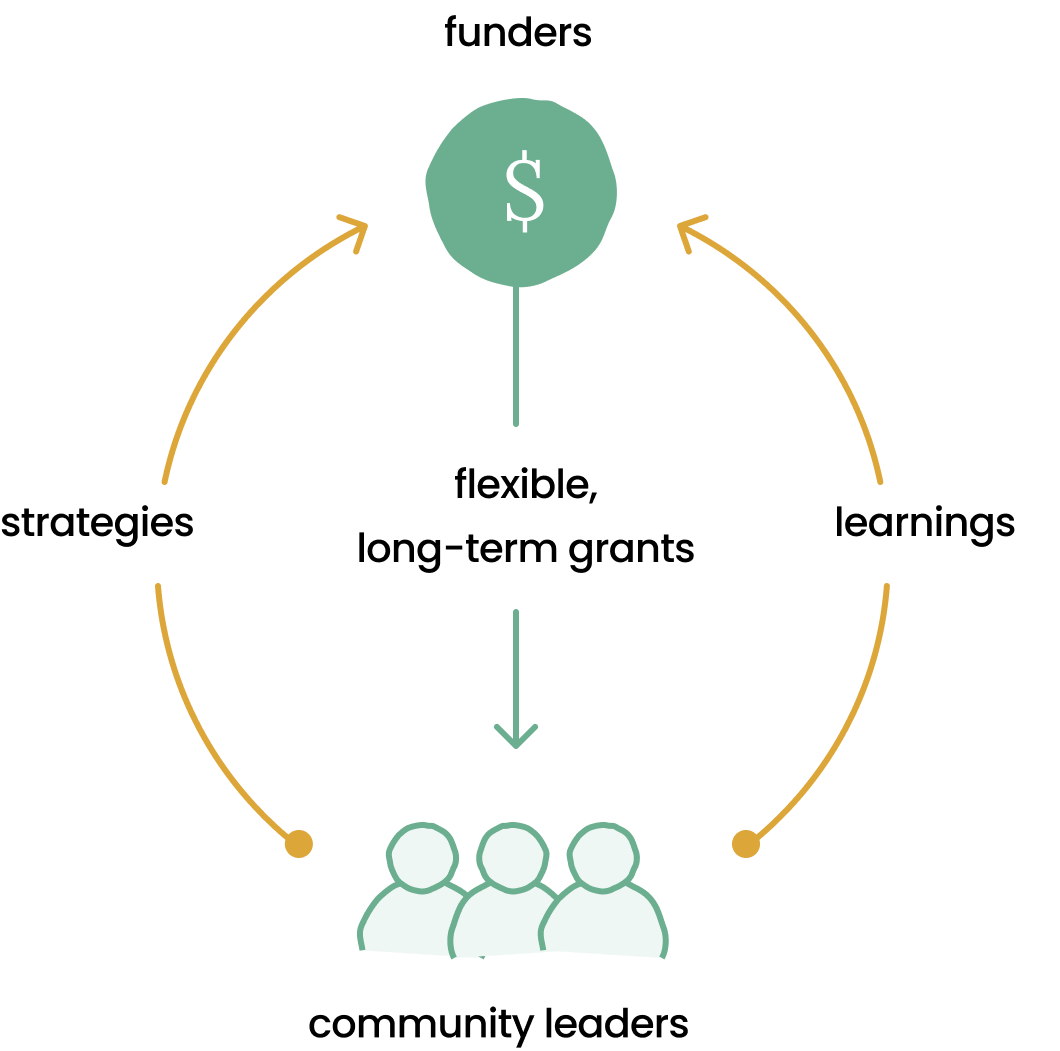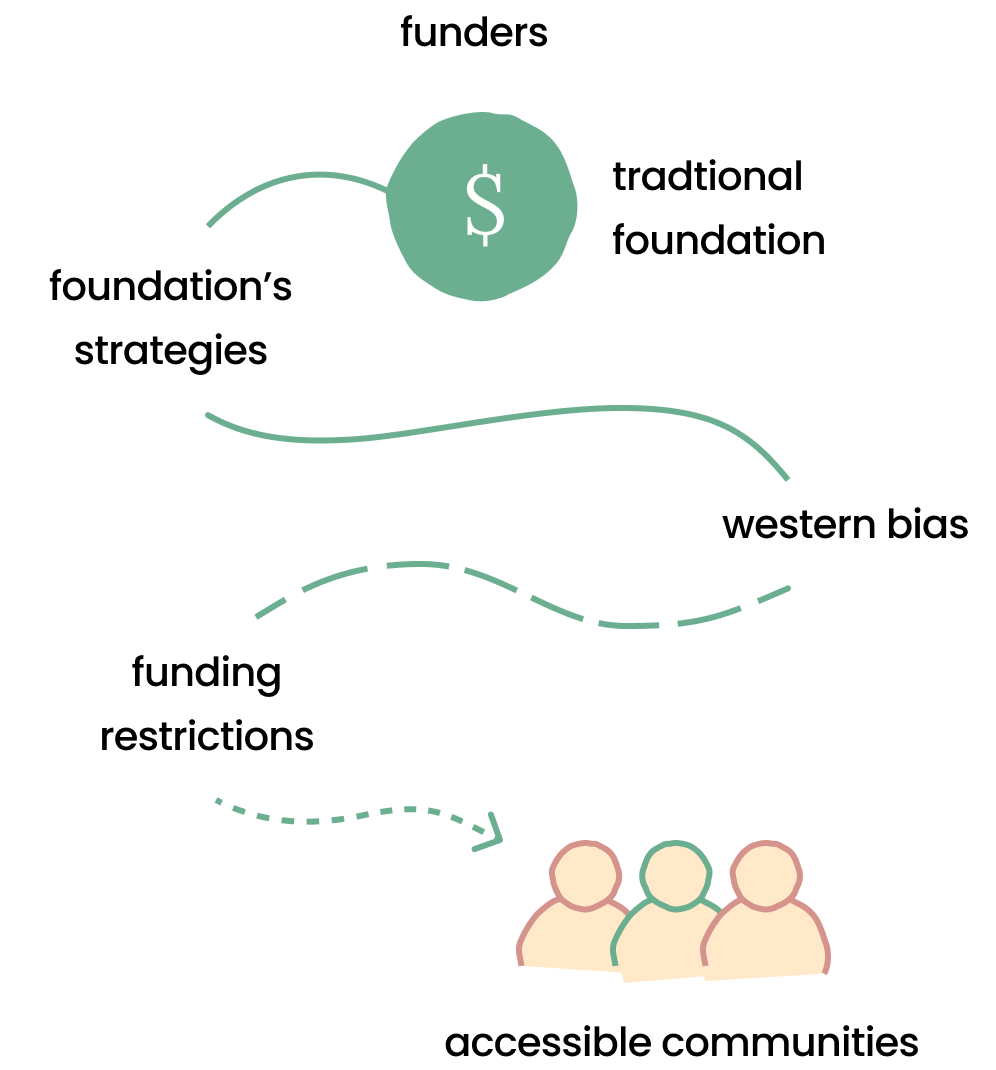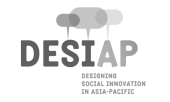Build with, not for.
Shift power to local hands, work with the most effective movement leaders, and build long-term community power from the ground up.
Learn how

What is direct philanthropy?

It encourages funders to focus on local communities, learn from local leaders, invest in systemic change, and give flexible, long-term funding.
However, it isn’t a tidy four-step process. This is a full-on shift in how you think, listen, and give. It’s an opportunity for grantmakers to build meaningful relationships with local leaders — and that is surprisingly revolutionary.
Our goal is to help new and experienced funders incorporate direct philanthropy as a living practice. We created this starter kit as a lightweight crash course, so you walk away confident and ready to partner directly with communities.

Philanthropy needs a script flip
-
1
Shift the power dynamic
To serve the most vulnerable populations, we need a completely new approach to grantmaking. Direct philanthropy rethinks how...
Read moreTo serve the most vulnerable populations, we need a completely new approach to grantmaking. Direct philanthropy rethinks how funders build relationships, formulate grants, and measure impact. It takes time, trust, collaboration, and a lot of honesty.Toggle accordion item
This is a power shift. It’s for people who are willing to examine their connection to structures of systemic racism and colonial inheritance, and start evolving business-as-usual philanthropy models. Direct philanthropy is for funders who want to build systemic change from the ground up by partnering with local communities.
Show less -
2
Invest in the most effective leaders
Direct philanthropy puts decision-making power in the hands of communities. This means connecting with local leaders on the ground, who are already...
Read moreDirect philanthropy puts decision-making power in the hands of communities. This means connecting with local leaders on the ground, who are already poised to make change.Toggle accordion item
In contrast, traditional models of philanthropy often center wealthy, Western, White outsiders, instead of relying on local experts’ knowledge. From this perspective, it’s easy to make assumptions about what impact and success look like — especially when filtered through many layers of administration.
This is how thousands of mosquito nets get used as fishing nets in coastal Africa, where hunger is a more pressing concern than malaria. Or how you get sparkling new toilets donated to a remote village on the Thailand-Myanmar border, where there is no running water. Legacy systems are not working for marginalized communities.
Change isn’t happening (gasp) around a boardroom table. Those closest to a problem are also closest to the solution. In a direct philanthropy model, the communities themselves determine what success looks like. We continue to see that this shows better outcomes, less waste, and more adaptability. You have the opportunity to partner directly with local leaders who are doing the work, and to navigate challenges, uncertainty, and successes alongside them.
Show less -
3
Build lasting community agency.
Direct philanthropy focuses on community resilience, laying the groundwork for sustainable, systemic change. You’re investing in people...
Read moreDirect philanthropy focuses on community resilience, laying the groundwork for sustainable, systemic change. You’re investing in people, not projects. This is an opportunity to support the long-term potential of a community-based organization (CBO). Therefore, a key benefit of the grantmaking process is the process itself — enabling communities to develop leadership skills, networks, and agency to sustain their work in the future.Toggle accordion item
This kind of community-driven work can be challenging for those operating in traditional modes of philanthropy, which often focus on one-size-fits-all metrics, strict reporting diligence and easy KPIs, instead of lasting change.
It’s not about having impressive numbers to put in a shiny annual report. By focusing on capacity-building, direct philanthropy nurtures the resilience that local leaders need to ensure impact over time. You’re supporting a community’s ability to build movements, shift social norms, and strengthen citizenship and democracy.
Show less
How is it different?
Direct philanthropy focuses on the marginalized groups that traditional funding sources don’t reach.
Direct philanthropy
Funders strategize with and learn from community leaders, and provide support for their big goals and ideas, directly.

Traditional philanthropy
Funders give to Traditional Foundations, which apply their own goals, preconceptions and restrictions before granting to communities equipped to clear their many hurdles.

Traditional funding models work well in certain contexts, but we need more direct philanthropy options to really make change for the vulnerable communities excluded from political, social, and economic power. As Therese Caouette of Partners Asia explains, “Direct philanthropy means facilitating direct grants to local leaders, listening to the priorities identified by communities, and strengthening their networks. It's an opportunity to not just share our privilege, but leverage it for change.”
“Direct philanthropy is an opportunity to not just share our privilege, but tangibly leverage it for change.”
– Therese Caouette, Advisor to Partners Asia, MOVE92, and Thammasat University's School of Global Studies
Why now?
It’s time to rethink outdated systems. Funding local nonprofits directly used to be difficult. But our society’s modern capabilities and racial awakening are making this method both more possible and more urgent than ever before.
-
1
COVID-19 magnified the inflexibility of big aid.
Many international nonprofits pulled their people out of affected regions during the pandemic, while elsewhere, communities with project-specific grants were left with their hands tied...
Read moreMany international nonprofits pulled their people out of affected regions during the pandemic, while elsewhere, communities with project-specific grants were left with their hands tied. With a direct philanthropy model, the response to unforeseen disaster can be faster, more elegant, and flexible.Toggle accordion item
One example is the real-time response from the local coalition real-time response from the local coalition COLECTIVO in rural Guatemala. COLECTIVO created public service announcements and contextual radio broadcasts to reach over two million people who wouldn’t otherwise have access to critical health information. When local leaders receive the trust of grantmakers and flexible funding, they can respond to major crises in ways that really serve their community.
Show less -
2
The public conversation is changing.
Around the world, more people are engaging with questions of racial justice, as the murder of George Floyd and widespread protests have sparked deeper conversations on White privilege...
Read moreAround the world, more people are engaging with questions of racial justice, as the murder of George Floyd and widespread protests have sparked deeper conversations on White privilege. Funders have started to look at their own practices of giving. How can grantmakers engage in philanthropy outside of old models that rely on White saviorism? How can they center on vulnerable communities? We created this starter kit to move that discussion to action.Toggle accordion item
Show less -
3
Technology has reshaped how donors think about giving.
Cash App, Venmo, and other apps make it incredibly easy to transfer money. Instead of being bogged down in old systems of philanthropy, a younger generation of donors has gotten comfortable with giving directly — and without expectations. Take, for example, the many people who helped neighbors (and strangers on Twitter) pay their monthly bills amidst the COVID-19 pandemic. This is a huge shift in what it means to be generous, and to be a part of a community.Toggle accordion item
Show less
The Direct Philanthropy Starter Kit
Get foundational knowledge and practical tools, and get started.

Whether you’re a large-scale funder, a grantmaker in an established organization, or just beginning to think about philanthropy, chances are that you’re hungry for real applications of this method. And that you have many questions. We’ve got you. We created a series of practical guides for incorporating direct philanthropy into your thinking, so you can act on these values now. It could mean incorporating one element — like flexible funding or a small grant — or inspire a whole new direction for your giving plans. Let’s dive in.
By reading this starter kit, you’ll get the tools to:
- Part 1: Know whether direct philanthropy is right for you.
-
Part 2: Strategize learning about new regions and opportunities. -
Part 4: Create mutual funding agreements that empower nonprofits. -
Part 3: Build trust-based relationships with the leaders you support. -
Part 5: Redefine impact alongside local leaders.
Want more content like this?
Sign up for our lightweight newsletter

Created in collaboration with Article Group
→














